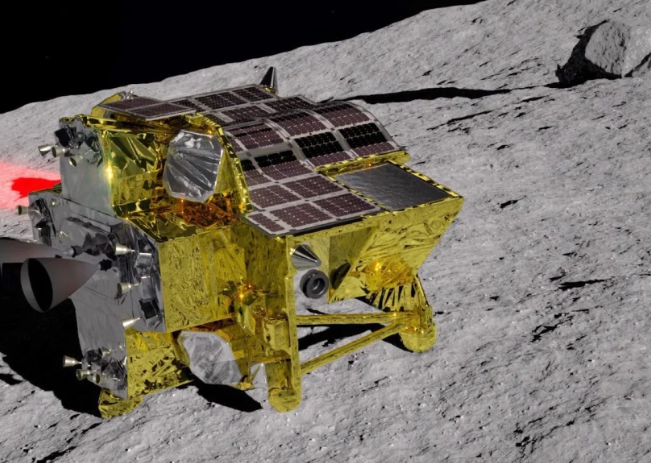Worldsfeed Tech Desk: Japan’s robotic explorer, known as the “Moon Sniper,” successfully landed on the lunar surface, but its mission faces potential premature termination due to a solar cell malfunction, leading to a loss of electricity. The Japan Aerospace Exploration Agency (JAXA) confirmed that the Smart Lander for Investigating Moon (SLIM) mission, which executed a precise and soft landing using optical navigation, is currently operating on limited battery power.
As the spacecraft’s solar cell is not generating electricity, the JAXA team is analyzing data to identify the cause, with the possibility that the issue stems from the spacecraft not pointing in the intended direction. While there is optimism that a change in the lunar solar angle might enable the solar cell to recharge, it remains uncertain if SLIM can survive the frigid lunar night. The mission is considered a “minimum success” as Japan becomes the third country this century, and the fifth overall, to achieve a lunar landing.
Despite the challenges, the lander successfully released two lunar rovers, LEV-1 and LEV-2. LEV-1 utilizes a hopping mechanism and is equipped with visible light cameras and scientific instruments, while LEV-2 can change shape for surface movement. JAXA is actively receiving signals from LEV-1 and awaiting more data to confirm the status of LEV-2.
The SLIM explorer, launched in September and nicknamed “Moon Sniper” for its precision technology, aimed for a pinpoint landing site near the Shioli crater within the lunar plain Sea of Nectar. Its mission involves studying rocks that could provide insights into the moon’s origin. The team is still assessing the accuracy of SLIM’s landing, a process expected to take up to a month.
Amid a renewed lunar space race, with multiple countries attempting moon landing missions, the SLIM lander’s lightweight design is seen as potentially effective for exploring small areas of interest not only on the moon but also on other planets like Mars, according to JAXA. The mission contributes to the global effort to access water trapped as ice in permanently shadowed regions at the lunar south pole, with potential applications for future space exploration.


0 Comments